
‘Tis the season to be jolly! What could be more merry than Santa’s sleigh? Well, without his dexterous reindeer, Old Saint Nick’s mode of transportation would not get very far. So today, we would like to share a few fun facts about this festive species.
1. Reindeer or caribou?
In Europe, they're known as reindeer. In North America, the term reindeer is used for Eurasian populations, while the name caribou refers to wild populations found in the country. However, both reindeer and caribou are classified as the same genus and species, rangifer tarandus. So for the purpose of simplicity and sticking with the holiday theme, we’ll call them reindeer for the rest of this blog.
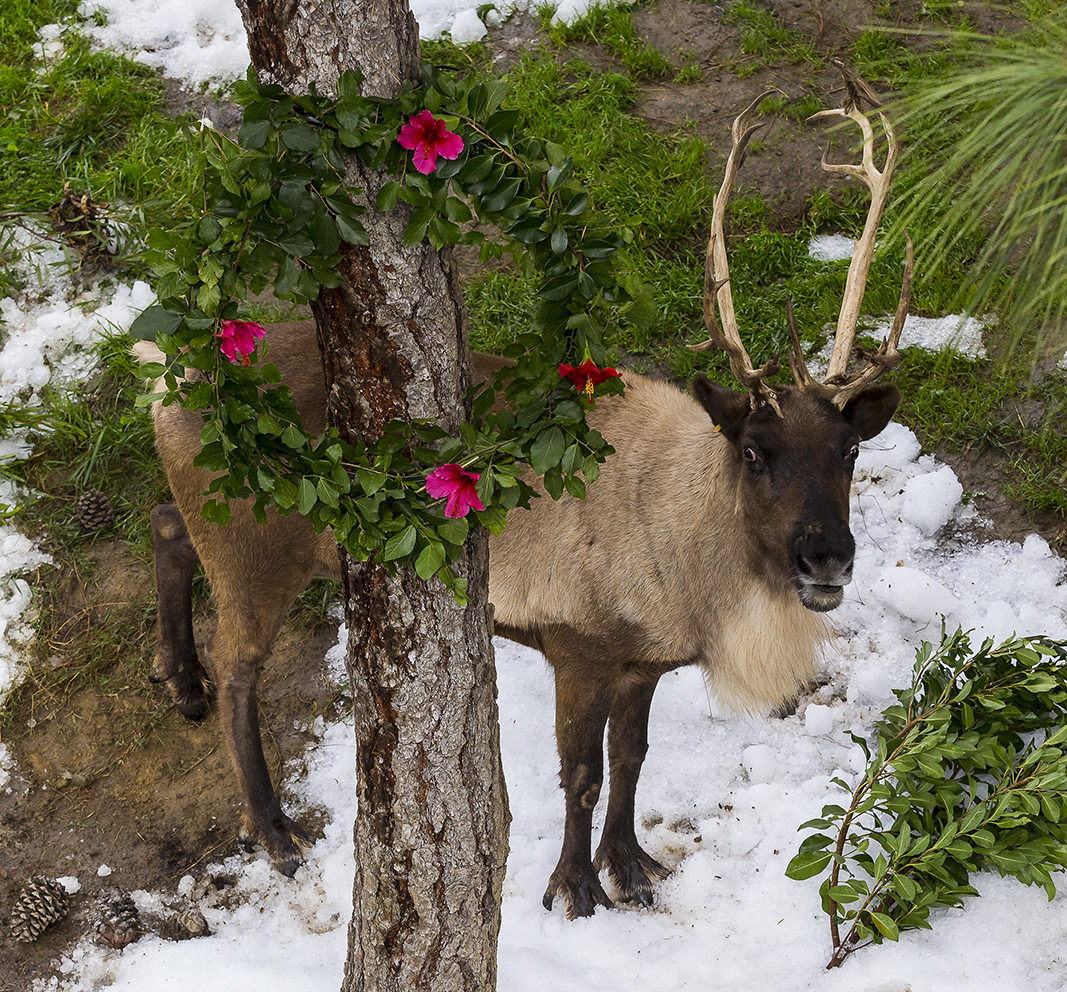
2. Males AND females grow antlers.
Male antlers may grow twice as long as their female counterparts; still, reindeer are the only deer species to practice gender equality when it comes to their most memorable characteristic. Males begin to grow antlers in February and females start in May. Both stop growing around the same time, but a male’s antlers typically drop off in November, while a female’s remain through winter until their calves are born in spring. If you’re following this logic, our good pal Rudolph the red-nosed reindeer was most likely a female, because she was rocking her antlers on Christmas Eve.
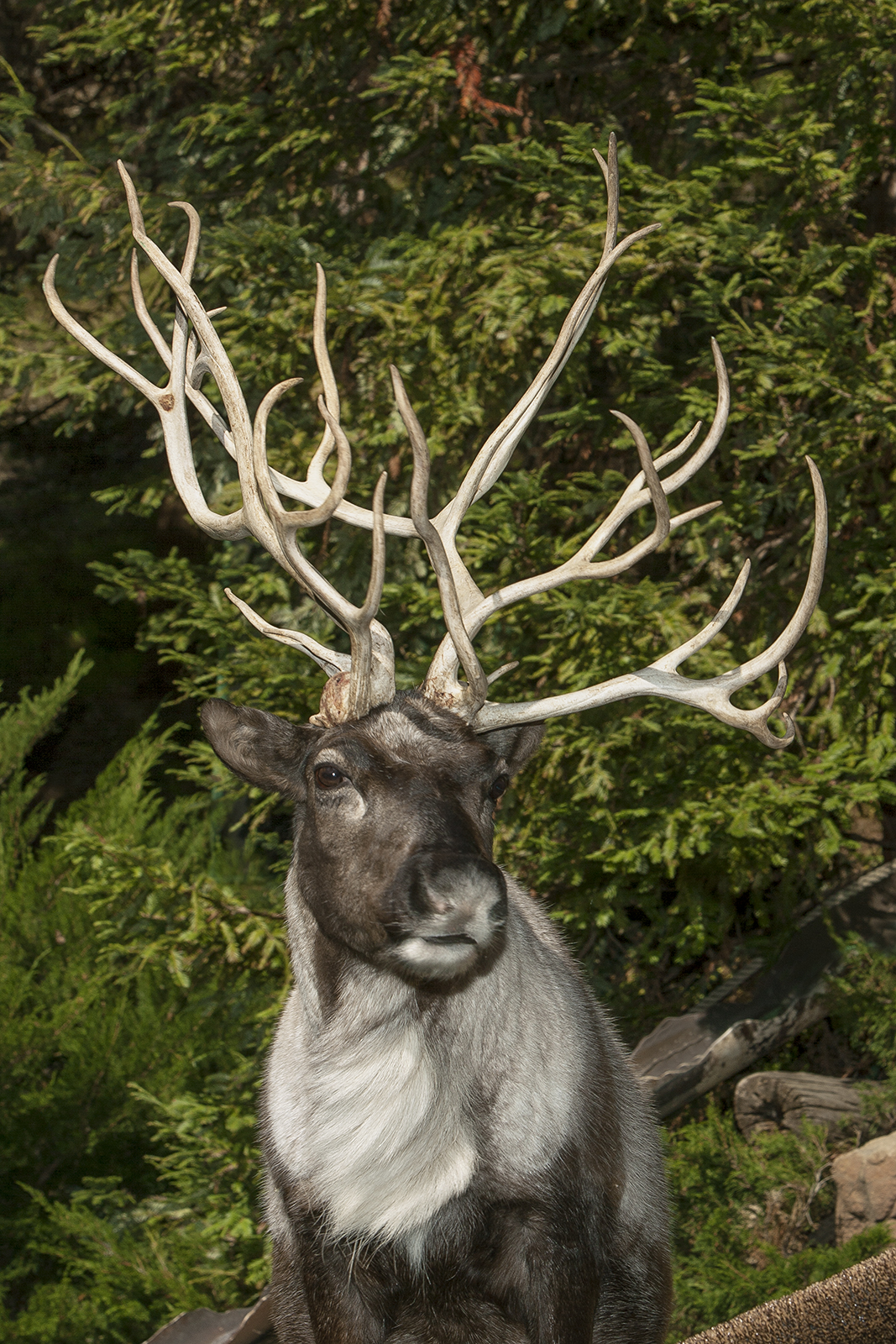
3. Hard antlers start out soft and fuzzy.
Since antlers fall off and grow back every year, a reindeer is said to be in “velvet” while the new pair of antlers grow. After the velvet dries up, the reindeer unveils its hard antler cores by rubbing its deciduous horns against a rock or tree. Ta-da!
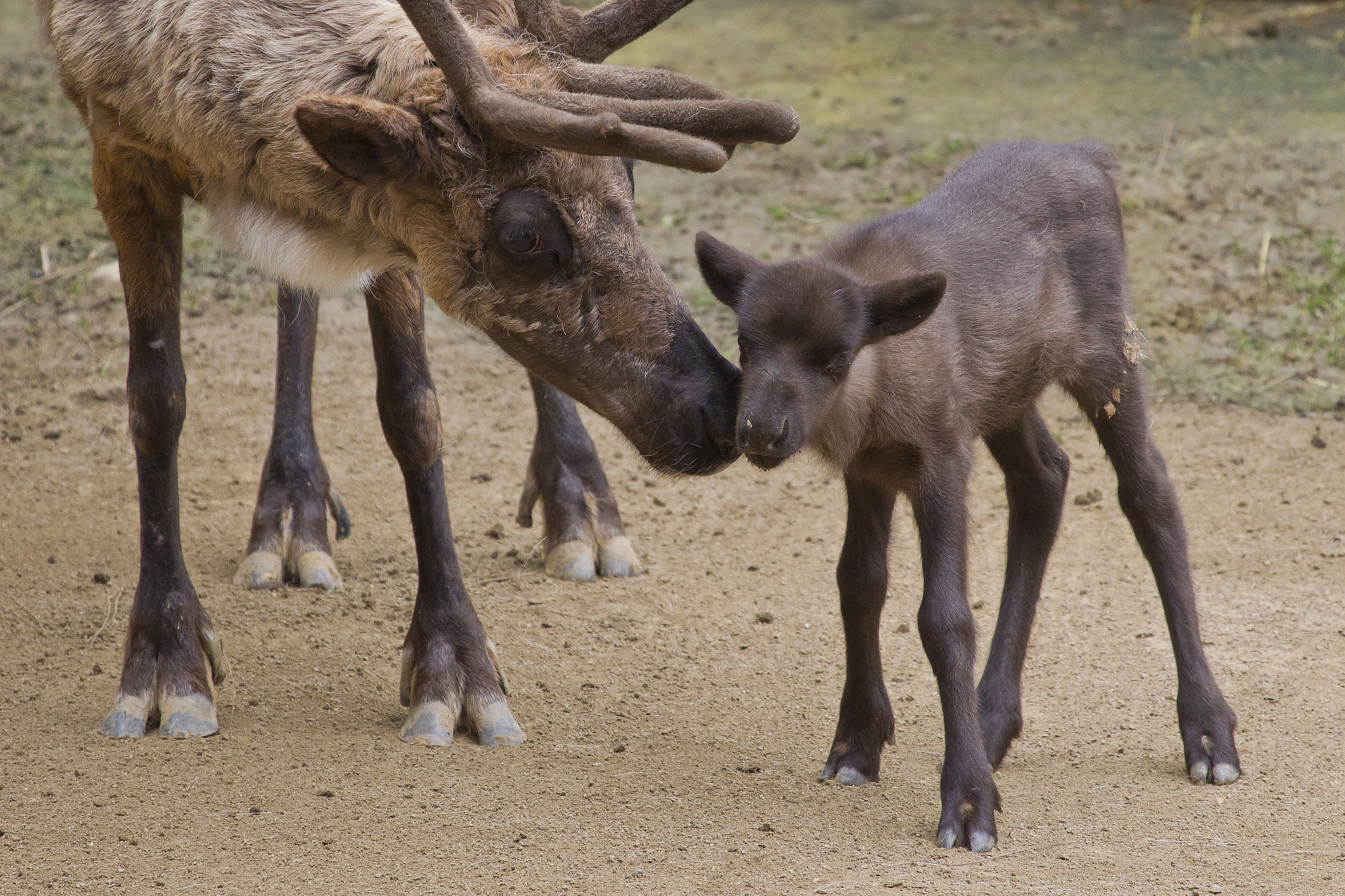
4. Reindeer calves are quick learners.
Newborns are able to stand one hour after birth, and they can outrun humans when they reach one day old. Calves are also weaned from their mothers as early as one to six months of age.
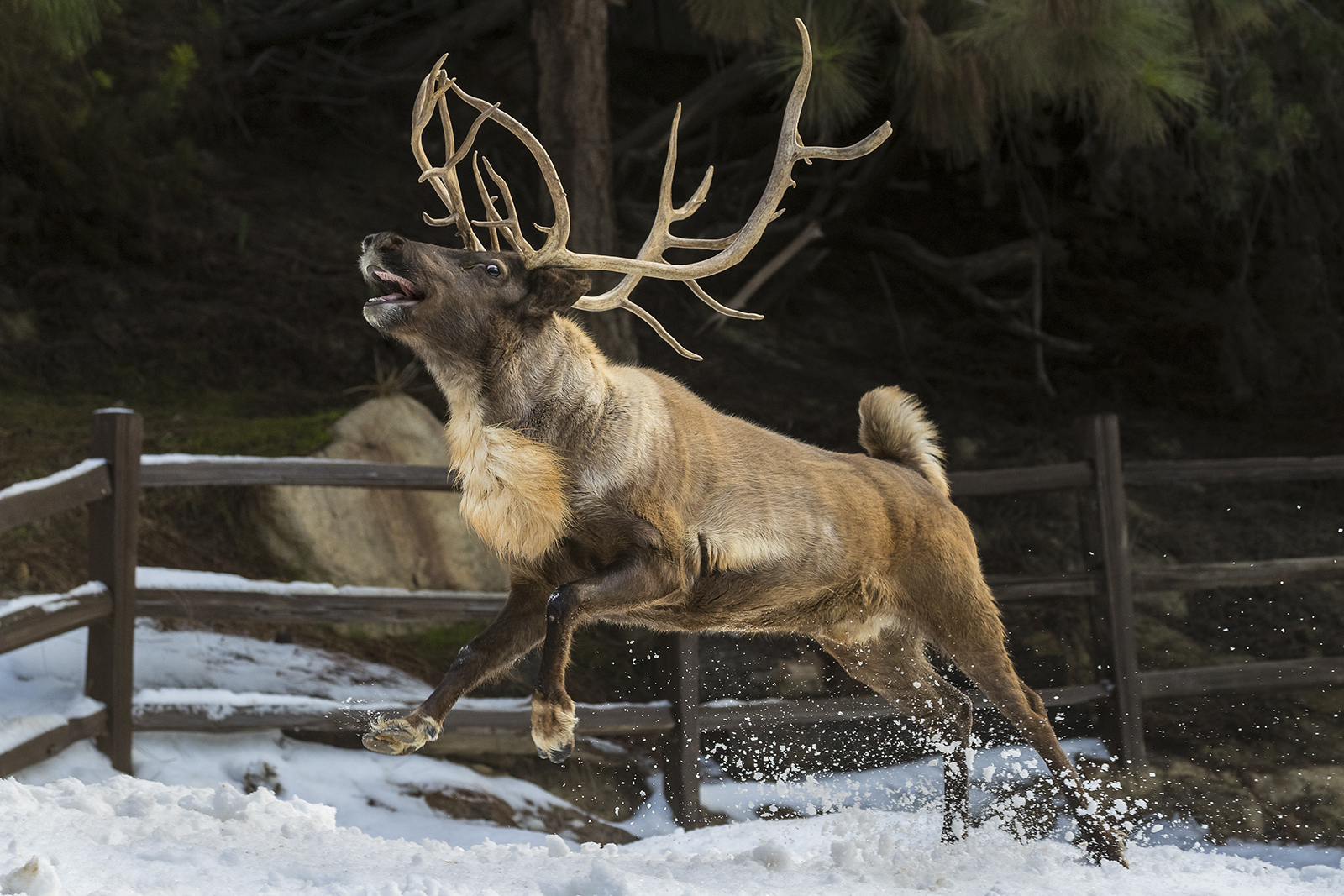
5. They have hairy feet.
Reindeer are built for subzero temps, so they’re covered in hair from their nose to the bottom of their feet. The hair on their hooves provides an excellent grip when trekking over frozen landscapes. Thus, the hairy hooves of reindeer have adapted into snowshoes for these Arctic animals.
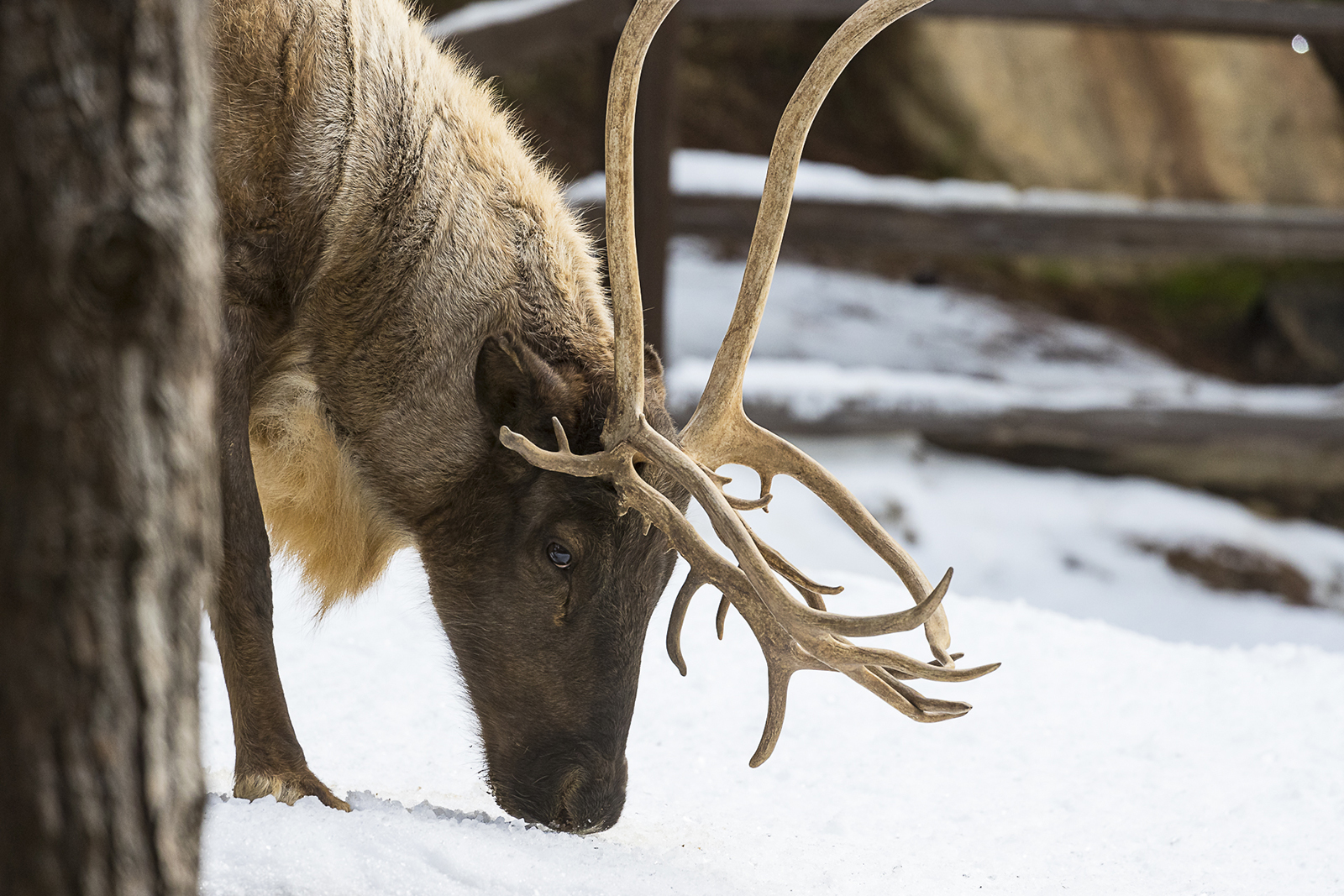
6. Reindeer hooves are anatomically noisy.
“Up On The Housetop” and other holiday jingles often imply that the “click, click, click” we hear upon Santa’s arrival is the result of his herd’s stampeding feet. In fact, many hoofed animals make loud noises when their feet meet hard surfaces, but not reindeer. The metallic sound of reindeer hooves is actually due to tendons slipping over their foot bones as they walk.
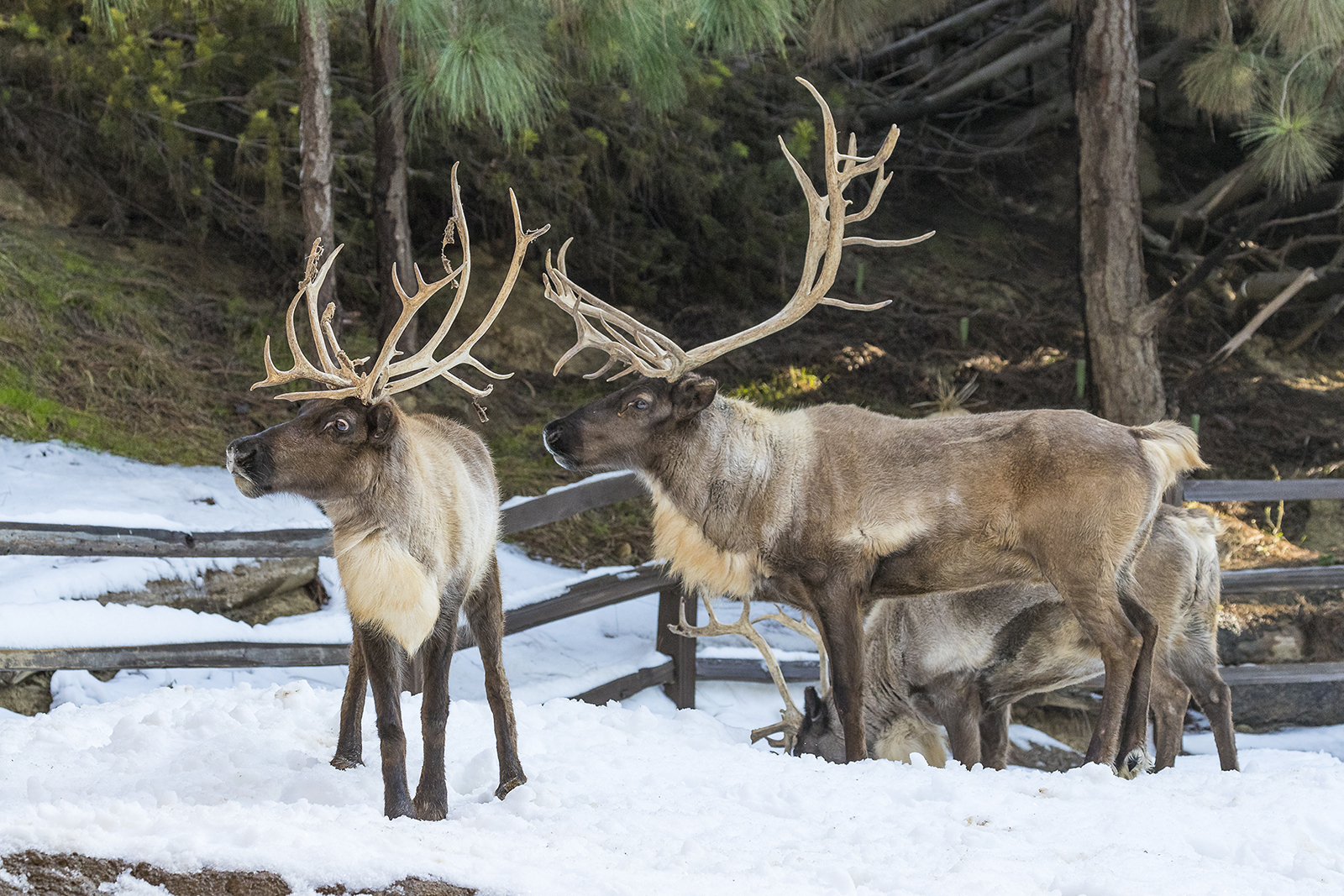
7. They love crowds...
… of other reindeer, of course. Since they are social animals, reindeer live in herds of 10 to several hundred. So Santa was somewhat limiting his holiday herd by having only nine reindeer. Imagine the horsepower his sleigh would have if his herd included 100 fancifully named members!
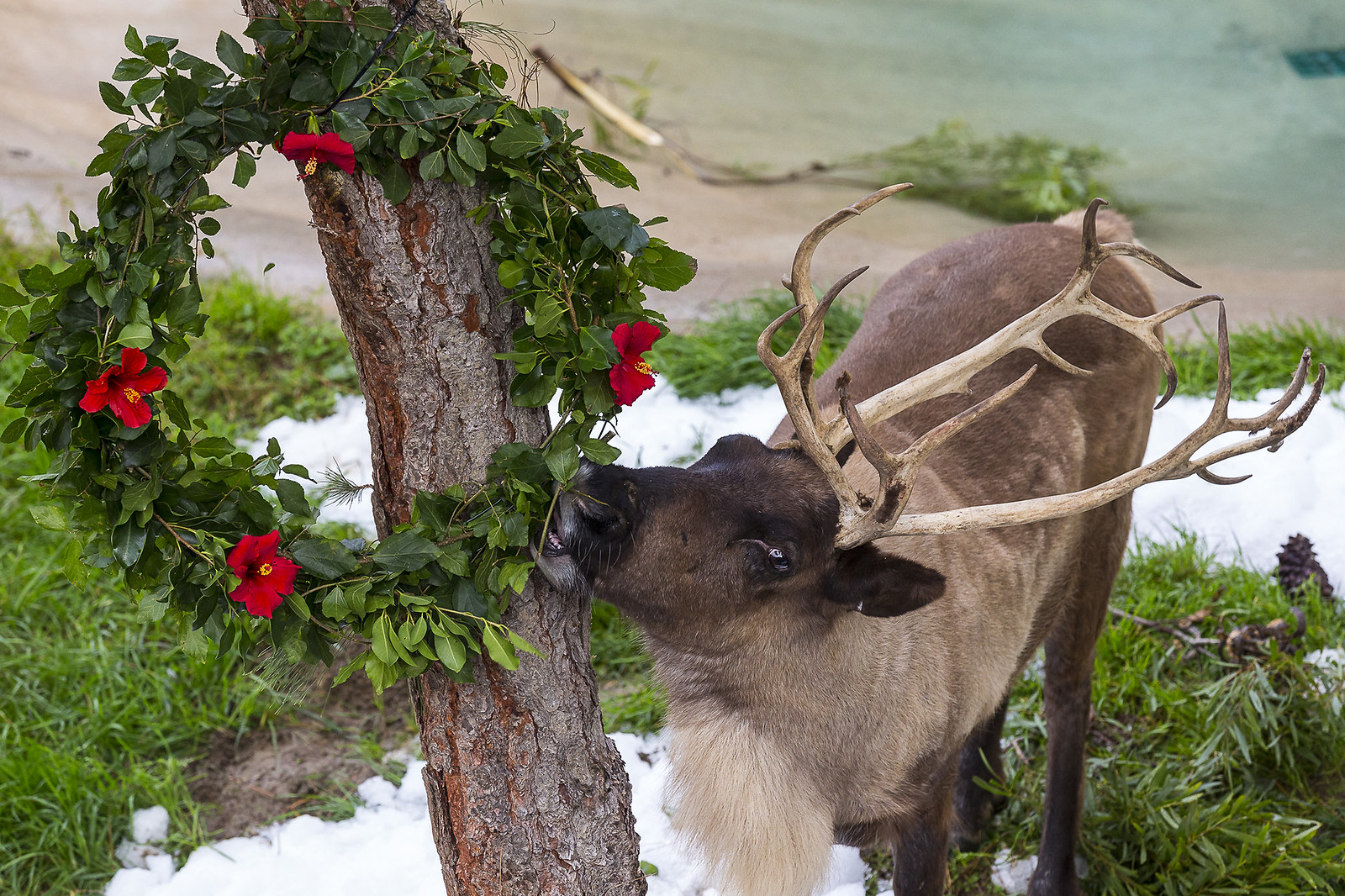
8. Reindeer are good swimmers.
Santa’s exclusive herd might be capable of flying, but the rest of the species is not. However, since reindeer migrate to follow their food supply and avoid harsh conditions, chances are they come into contact with water. Luckily, reindeer use their wide, two-toed hooves like paddles that push water and allow these mammals to swim from four to six miles per hour.
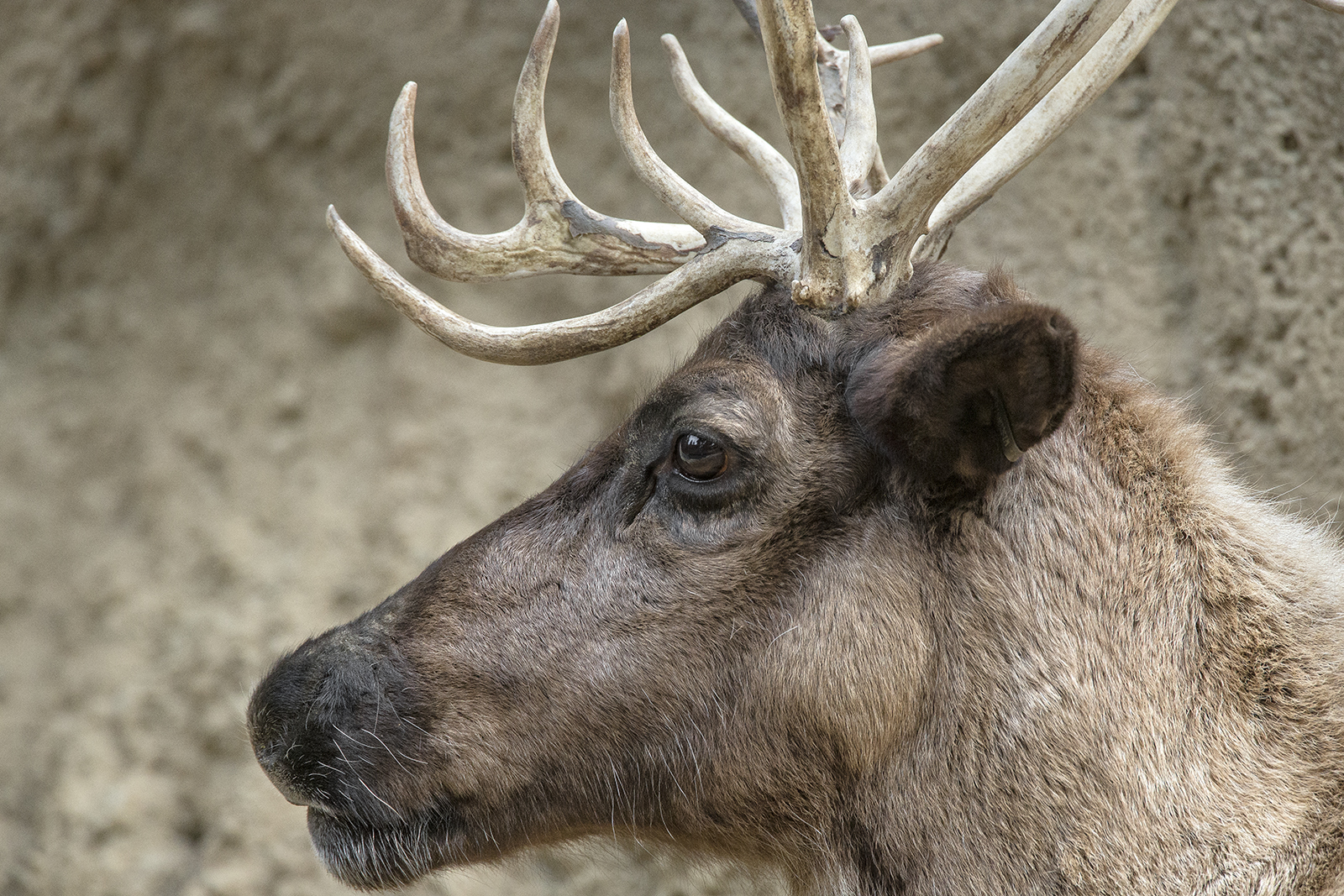
9. Their eyes change color in winter.
To adapt to the varying levels of light in their northern habitat, part of a reindeer’s eye changes color and increases their vision sensitivity. The layer of tissue behind the retina that reflects light (tapetum lucidum) turns blue during winter and allows reindeer to see slightly more of their surroundings, even if what they can see is not that sharp or in focus. This seasonal trade-off has its advantages, especially if it improves a reindeer’s ability to spot predators.
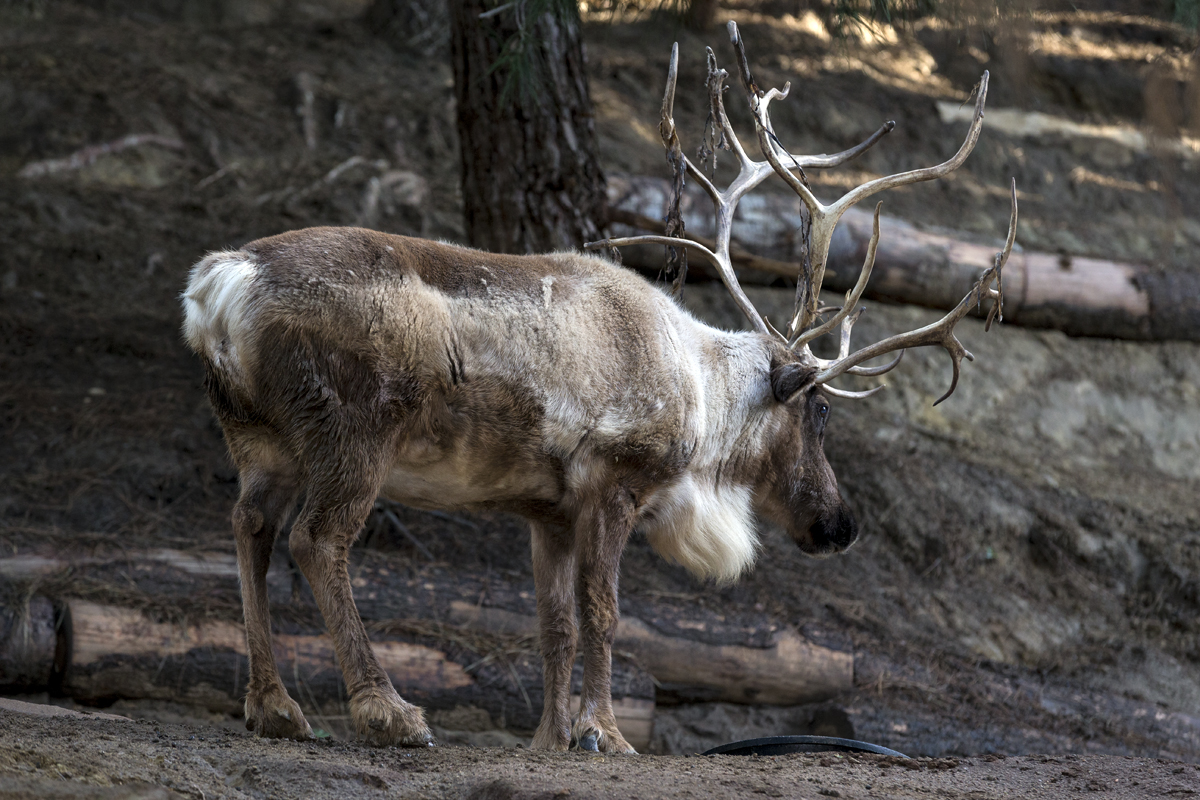
10. Like humans, reindeer “wear” layers.
A reindeer has two coat layers: the undercoat is made of soft, fine wool that grows next to the skin, and the top layer consists of long, hollow guard hairs. Similar to a hollow-fill winter jacket worn by humans, the stiff top layer insulates the animal and keeps it warm against the wind and cold. These hollow hairs also help reindeer float. In other words, reindeer have incredible fashion sense.
Jenn Beening is the social media specialist for San Diego Zoo Global. Read her previous post, 11 Animals That Feast Together.




